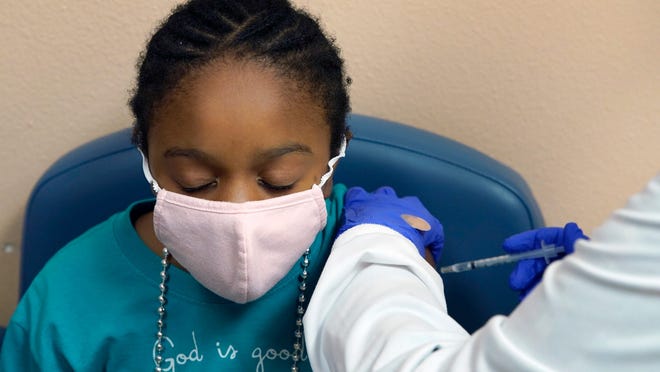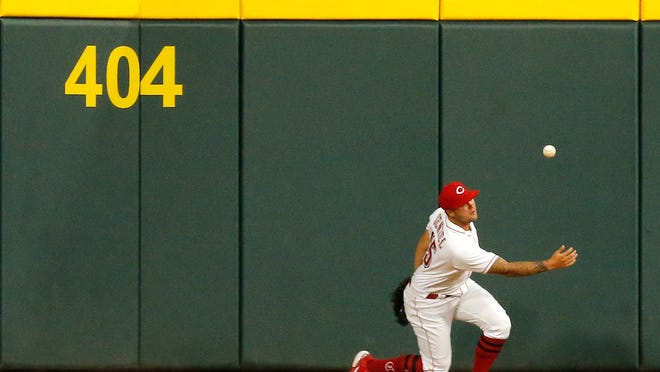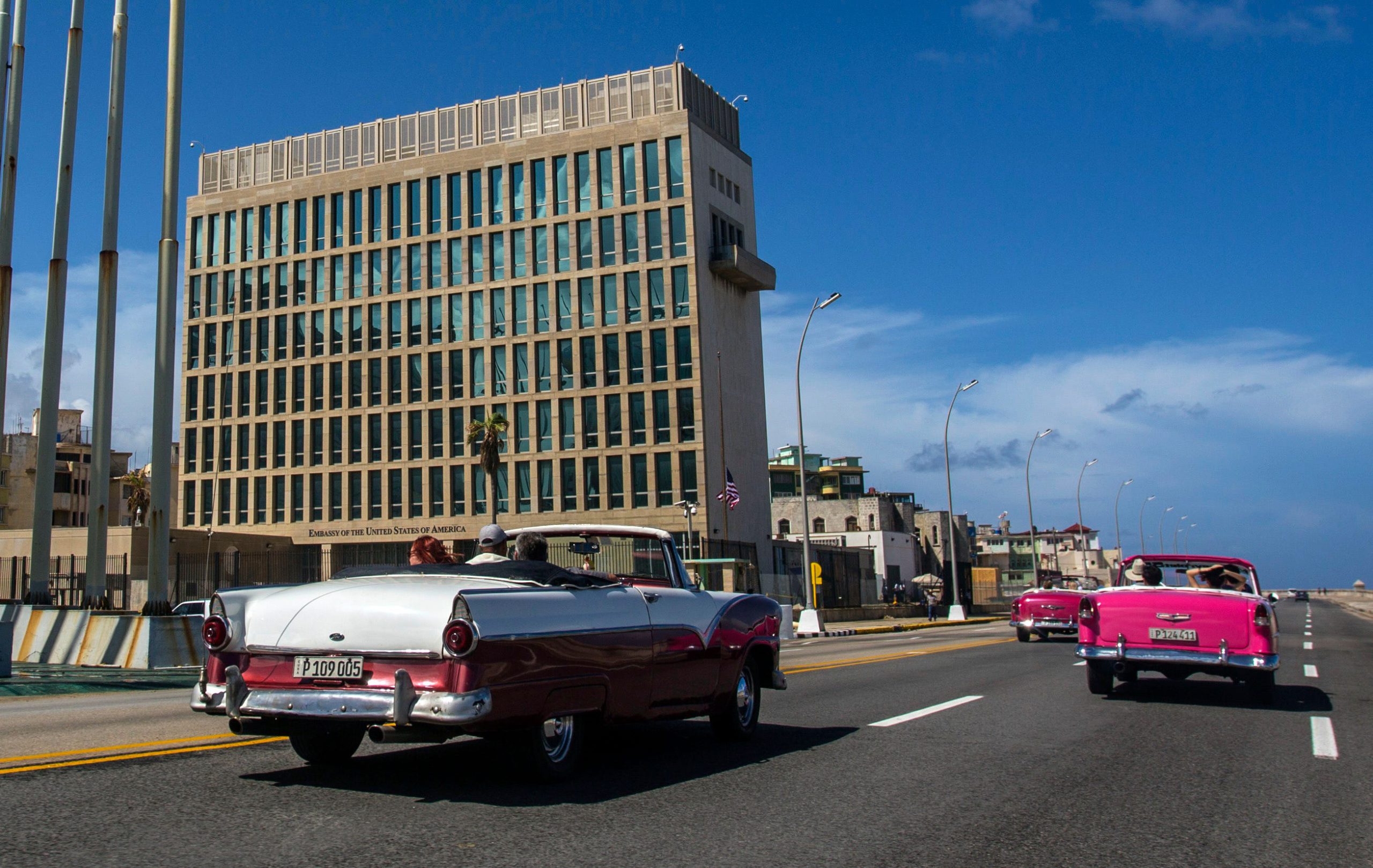
As many as 700 National Guard members are prepared to man posts across the nation's capital amid planned trucker protest convoys that organizers say could paralyze the city without entering it.
Bob Bolus, a Pennsylvania truck driver, says he's leading the Freedom Convoy of trucks from Pennsylvania to Washington today. But he told NBC4-TV in Washington that he has backed off plans to gridlock the Capital Beltway, a 64-mile roadway through Virginia and Maryland that circles Washington, D.C. His grievances include vaccine mandates, pandemic-related restrictions and high fuel prices, among other issues.
"We’re not shutting the traffic down today," Bolus said. "If we don’t have a resolution from the government, to the rights that they’re taking from us, I will predict in the future it will get shut down."
The convoys were inspired by truckers and others protesting coronavirus restrictions and other issues in the Canadian capital of Ottawa that brought downtown vehicular traffic there to a standstill for three weeks. Similar protests also shut down border crossings for days at a time.
The Pentagon approved the use of 400 District of Columbia guard members and 300 members from other states along with 50 "large tactical vehicles" to help keep traffic flowing, the D.C. National Guard said in a statement.
The Guard vehicles will take up positions at strategic intersections starting no later than 1 p.m. on Saturday or as soon as possible, the statement said. The guard members will not be armed and they will not be authorized to conduct "domestic surveillance activities," the statement said.
Personnel from other states will be commanded by the local guard leadership but will remain under the control of their governors. The mission is approved to continue until March 8 if necessary.
Another group, the People's Convoy, planned to leave California today and pick up other truckers ahead of a March 5 arrival on the Capital Beltway. The group said it does not intend to enter D.C. proper.
"The message of The People’s Convoy is simple," the organization says on its website. "With the advent of the vaccine and workable therapeutic agents ... it is now time to re-open the country."
White House press secretary Jen Psaki said the Biden administration has been monitoring the protest plans.
Also in the news:
►The New Jersey Legislature, reconvening Monday, has dropped a requirement to show proof of COVID-19 vaccination or a negative test to enter the statehouse or adjacent buildings.
►North Carolina’s two largest school districts will drop mask requirements effective March 7. The Wake County and Charlotte-Mecklenburg school boards voted separately to conform with Gov. Roy Cooper’s recommendation to end mask mandates.
►The number of new coronavirus cases around the world fell 21% in the last week, marking the third consecutive week that COVID-19 cases have dropped, the World Health Organization said.
📈Today's numbers: The U.S. has recorded more than 78.6 million confirmed COVID-19 cases and nearly 939,000 deaths, according to Johns Hopkins University data. Global totals: More than 428.6 million cases and over 5.9 million deaths. More than 215 million Americans – 64.8% – are fully vaccinated, according to the Centers for Disease Control and Prevention.
📘 What we're reading: The CDC found 21 cases of multi-system inflammatory syndrome in teens who got at least one dose of a COVID-19 vaccine. While the report may appear concerning at first, experts say a deeper dive into the data highlights the importance of COVID vaccination in children and teens as most of the cases were in those not considered fully vaccinated.
Keep refreshing this page for the latest news. Want more? Sign up for USA TODAY's free Coronavirus Watch newsletter to receive updates directly to your inbox and join our Facebook group.
Just got a first vaccine shot? You might want to wait 8 weeks for jab 2
The ideal time between the first and second shot of the Moderna and Pfizer vaccinations is up to eight weeks for most people, the Centers for Disease Control and Prevention announced Wednesday in a guidance update. The previous time frame had been four weeks for Moderna, three weeks for Pfizer. CDC officials said those time frames can work but that research shows the longer interval can provide more enduring protection. Research suggests that 12- to 64-year-olds – especially males ages 12 to 39 – can benefit from the longer spacing, the CDC said. The agency also said the longer wait may help diminish an already rare vaccination side effect of heart inflammation seen in some young men.
The change won’t affect many people: The CDC says 73% of people age 12 and older already have received two doses.
COVID patients face higher risk of cardiovascular disease, study shows
People who have been infected with the coronavirus are much more likely to encounter cardiovascular disease compared to those who were never infected, a new study published in the Nature Medicine journal found. Millions of American COVID-19 patients have struggled with the long-term effects of COVID-19 since the beginning of the pandemic, dubbed "long COVID." The Nature Medicine article focuses on cardiovascular diseases, using data from the U.S. Department of Veterans Affairs to study over 150,000 veterans who contracted COVID-19 for up to a year after recovery. Those who contracted COVID-19 were over 60% more likely to develop a cardiac issue.
Researchers found that those who had a COVID-19 infection were more likely to have inflammatory heart disease, heart attacks, heart failure, clotting and other cardiovascular symptoms compared to those who had never been infected.
Is a lack of data obscuring which kids aren't getting the COVID-19 shot?
Experts worry a lack of data may be obscuring where to target strategies for vaccinating kids of color, who disproportionately suffer severe illness from COVID-19 but may lack access to the shot. Just shy of a third of children ages 5 to 11 nationwide have received at least one dose of COVID-19 vaccine and a quarter are fully vaccinated, Centers for Disease Control and Prevention data shows. About 67% of kids 12 and older have received one dose, and only 57% are fully vaccinated.
But the CDC does not report children’s COVID-19 vaccination rates by race, and inconsistencies and variations remain in the ways figures are broken down and reported from state to state. The Kaiser Family Foundation reports only seven states are releasing kids’ vaccination data by race in a way that allows for statistical comparison. Among those states, Black children generally trailed behind white children, and rates of kids from other racial groups vary.
– Nada Hassanein, USA TODAY
Contributing: The Associated Press
Source link









